I got an Amish-built board-n-batten coop delivered this past month (October). It's a 6' x 8', with 5 double-hung windows, 1 people door, 1 chicken door.
I didn't order vents. I figured I could retrofit all the vents just fine. That is, that my husband could.
The walls are not insulated, but the roof is, with 1/4" Reflectix bubble insulation. Don't know the R-value.
After the coop arrived, my husband decided to let me do the vents, because it was too time-consuming for him, so I put soffit vents all along 2 sides .
The best I could do was to drill 3" circles in the front side and install 5 three-inch vents along the front eaves, 10 two-inch vents along the back eaves.
here are photos of this. They're louvered outward. I don't know the square inch area of total venting here. Not much, I guess. Here are the back ones.
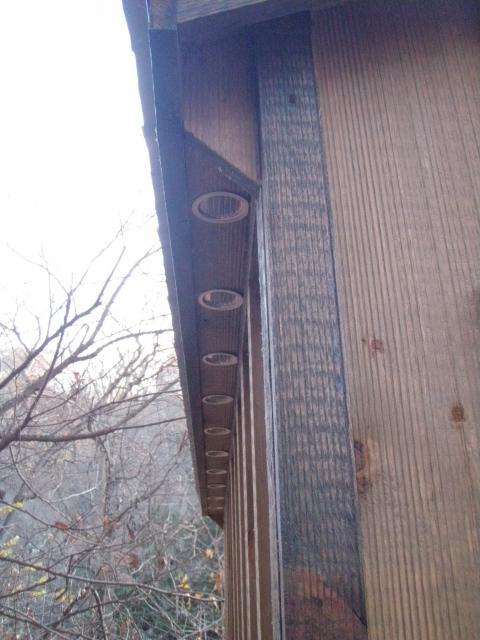
After the chickens had been in the coop a week and the nights started getting cold, I closed all the windows down to 1/2 inch.
In the mornings, moisture would be built up on the upper window panes, and the hygrometer was reading 85% humidity. That's what it read before I installed the vents.
I then bought 2 8 x 16 " louvered vents, like register intake vents, and cut holes in the two peaked sides and installed them (with hardware cloth behind).
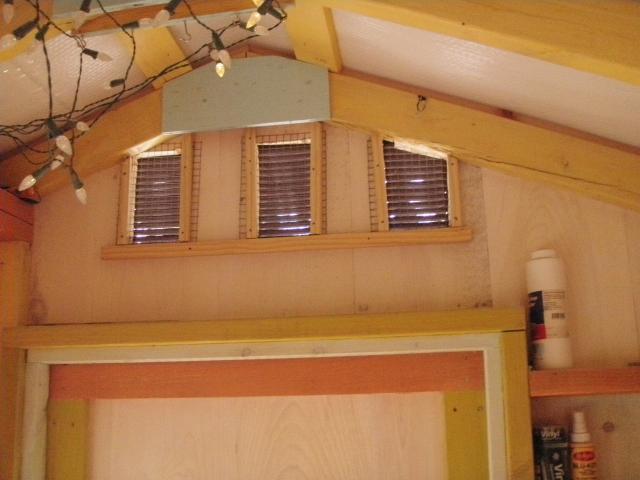
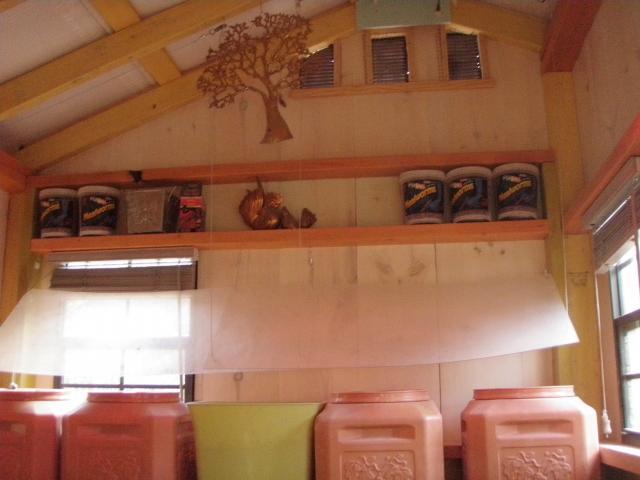
These holes in the wall are 4 1/2 x 7 each, and the louvered parts of the brown vents fit over them, on 2 sides. The vents are cut into thirds because of the batten strips.
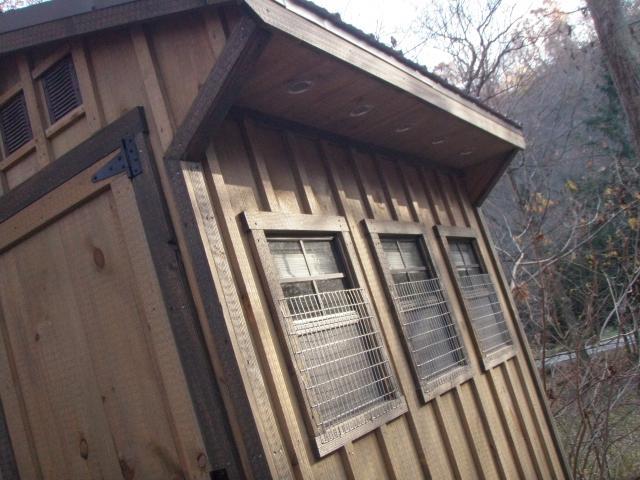
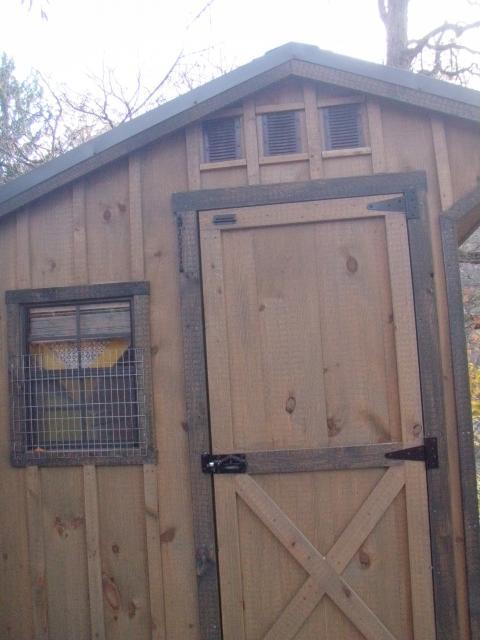
The louvers point downward on the outside to deflect rain. I assume the heat and humidity can still escape, or should I refit these upward ?
I measured my results each morning with the hygrometer, and I find it still reads 82% in the morning on rainy days, 75% on sunny days, in the mornings. Also, if I can't clean the poop every day, by the third day I smell some ammonia. I have linoleum over plywood floor, an inch of play sand, 3 inches of pine litter, mixed liberally with DE.
I have a poop trough instead of a poop board with the same sand, pine, DE mixture. I clean it every 2-3 days.
I should also mention I have 20 bantam hens in there, nights, and half of the day on the rainy days, in Western PA. Half of them are 20 oz OEGBs & D'Anvers.
Apart from probably having the max. capacity of chickens, is my ventilation enough, in theory? It is on 4 sides. Windows will all open in summer.
I didn't order vents. I figured I could retrofit all the vents just fine. That is, that my husband could.
The walls are not insulated, but the roof is, with 1/4" Reflectix bubble insulation. Don't know the R-value.
After the coop arrived, my husband decided to let me do the vents, because it was too time-consuming for him, so I put soffit vents all along 2 sides .
The best I could do was to drill 3" circles in the front side and install 5 three-inch vents along the front eaves, 10 two-inch vents along the back eaves.
here are photos of this. They're louvered outward. I don't know the square inch area of total venting here. Not much, I guess. Here are the back ones.

After the chickens had been in the coop a week and the nights started getting cold, I closed all the windows down to 1/2 inch.
In the mornings, moisture would be built up on the upper window panes, and the hygrometer was reading 85% humidity. That's what it read before I installed the vents.
I then bought 2 8 x 16 " louvered vents, like register intake vents, and cut holes in the two peaked sides and installed them (with hardware cloth behind).


These holes in the wall are 4 1/2 x 7 each, and the louvered parts of the brown vents fit over them, on 2 sides. The vents are cut into thirds because of the batten strips.


The louvers point downward on the outside to deflect rain. I assume the heat and humidity can still escape, or should I refit these upward ?
I measured my results each morning with the hygrometer, and I find it still reads 82% in the morning on rainy days, 75% on sunny days, in the mornings. Also, if I can't clean the poop every day, by the third day I smell some ammonia. I have linoleum over plywood floor, an inch of play sand, 3 inches of pine litter, mixed liberally with DE.
I have a poop trough instead of a poop board with the same sand, pine, DE mixture. I clean it every 2-3 days.
I should also mention I have 20 bantam hens in there, nights, and half of the day on the rainy days, in Western PA. Half of them are 20 oz OEGBs & D'Anvers.
Apart from probably having the max. capacity of chickens, is my ventilation enough, in theory? It is on 4 sides. Windows will all open in summer.



